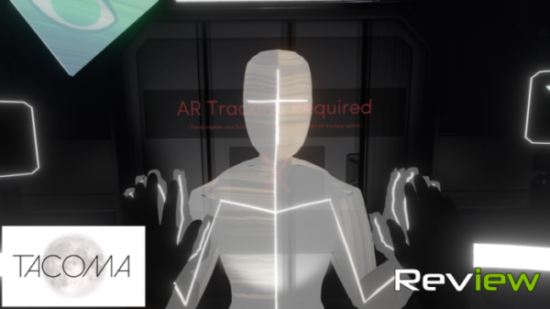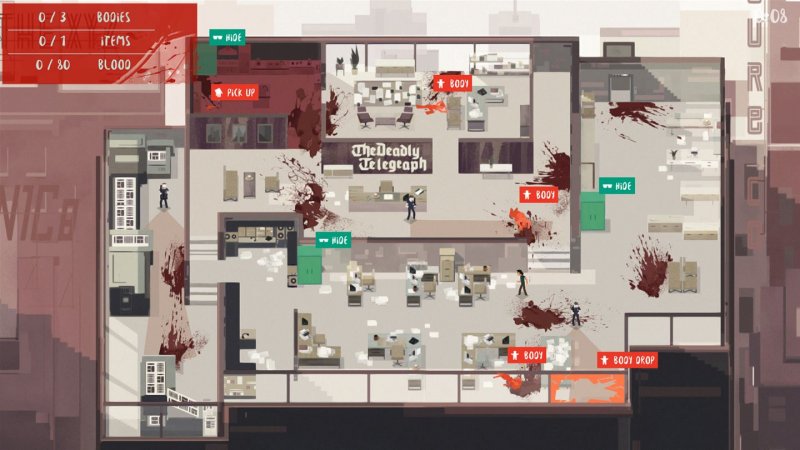As I explored the claustrophobic corridors of the space station Tacoma, I couldn’t help but think of a sprawling suburban home in Portland. In 2013, Tacoma developer the Fullbright Company released the seminal Gone Home, a breakthrough game that further cemented a genre disparagingly called “walking simulators” as a valid style of interactive storytelling. It wasn’t the first such game, but Gone Home’s poignant, personal tale, combined with its dense and lifelike Pacific Northwest setting, made it stand out as particularly powerful. In the intervening years, other creators continued to develop the concept further, including Campo Santo with Firewatch, the Chinese Room’s Everybody’s Gone to the Rapture, and Giant Sparrow’s short anthology What Remains of Edith Finch.
Now Fullbright is back with the sci-fi-themed Tacoma. Like its spiritual predecessor, Tacomais a game about exploring the traces of people’s lives in an empty world. In many ways it’s also an example of a creator evolving their craft. Tacoma is more complex and detailed than its predecessor, with an ambitious story to tell. Often this works to its benefit. But at times, Tacoma tries to do a bit too much, getting away from the personal, scrappy feel that made Gone Home so memorable.
Tacoma puts you in the spaceboots of Amy Ferrier, a contractor sent by a large corporation to visit Tacoma, a recently evacuated space station. Amy’s job is to extract data from the station’s artificial intelligence, and then return it to her employers to analyze. As she explores, she finds a much more complex situation than first thought. What starts out as a group of astronauts celebrating the fact that they’re heading home, takes a turn for disaster when the station is seemingly battered by meteors, knocking out important systems. The story only lasts a few short hours, but it’s punctuated by several revelations that will change how you view the inhabitants and their struggle to survive.
Much like its predecessor, Tacoma is fairly simple as a game. It’s a first-person experience where you can walk around and interact with certain things, but there are no complex controls to master or even puzzles to solve. The game does add an interesting new wrinkle, however: once she’s aboard Tacoma, Amy gets access to an augmented reality system that does everything from provide instructions from her superiors, to display a map of the station itself. Amy’s job is straightforward. All she needs to do is visit each section of the station and extract the necessary data.
But that process takes some time, so while the information is being downloaded, you’re largely free to explore, and it’s here that you can utilize the most important AR tool. The system has the ability to actually pick up recordings of the now-departed residents of Tacoma, so you can watch for yourself what went down. These colorful holographic recordings are layered over the world around you. You’ll see characters talk and hug and move about the station. You can also rewind and fast-forward through these recordings, which often cover large expanses of the station. So if someone leaves a conversation midway through, you can rewind later on and then follow them to see what you might’ve missed. It’s like watching a play where you can decide which characters to listen to at any given time.
The holograms are the most important narrative tool in Tacoma, with a theatrical vibe that lets you sit back and observe, and take things in at your own pace. The recordings were all taken at different times — some just a few days prior, others up to a year ago — and many of them are corrupt and missing important parts, leaving it to you to figure out how to piece them together. You have a lot of control over just how far you want to delve into the story and characters. During the recordings, you can pause and explore the characters’ own AR systems, reading their personal chat logs and emails. Similarly, the station itself is full of clues to uncover, from important information like passcodes to small details that help you understand the characters better. Just like in real life, you can learn a lot about someone just by perusing their bookshelf, whether it’s the technician who relaxes with pulpy space operas, or the stressed-out doctor who keeps a book on mindfulness beside her toilet.
You don’t have any influence over the story, and it’s entirely linear, but it’s no less compelling for it. Tacoma is a tense thriller about how people deal with adversity, set in a future defined in part by corporate greed. Think Alien meets Gravity with a touch of young adult angst. At times, though, the game also seems to tackle a bit more than it can handle. While the characters and their personal relationship all have a real, tangible depth to them, the game also tries to explore important existential issues related to technology, most notably the role that AI will play in our lives. Tacoma is run in part by an AI named Odin, who acts as both an administrator and a friend, as well as a liaison with corporate HQ. But this aspect of the story feels underdeveloped, taking a back seat to Tacoma’s inhabitants and their relationships. There are a few major revelations about Odin toward the end, but it cuts off so abruptly you don’t really have time to absorb them. The game’s three-hour runtime doesn’t feel long enough to properly investigate the lives of six stranded space farers and the potential threat of artificial intelligence.
Tacoma isn’t the revelation Gone Home was, but it also doesn’t have to be. Abrupt conclusion aside, the game is a smart and emotional experience, one that pushes the nascent first-person exploration genre ever slightly forward. If Gone Home was proof that first-person narrative games had a future, Tacoma represents that very future — and how much potential it still has.


